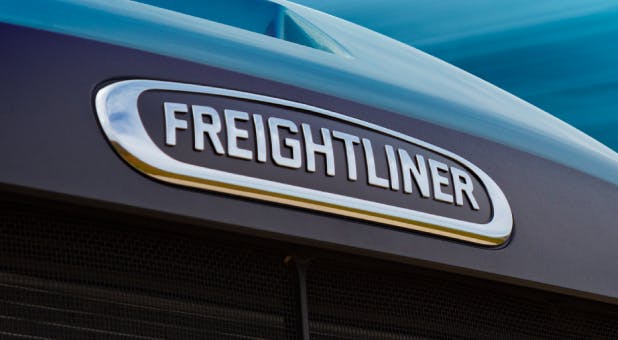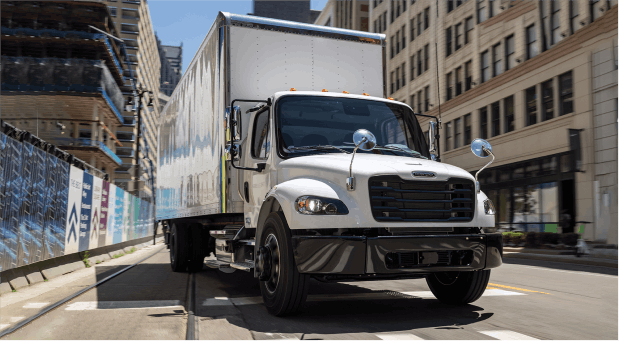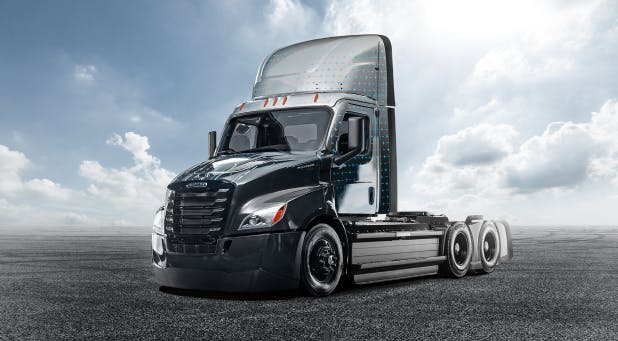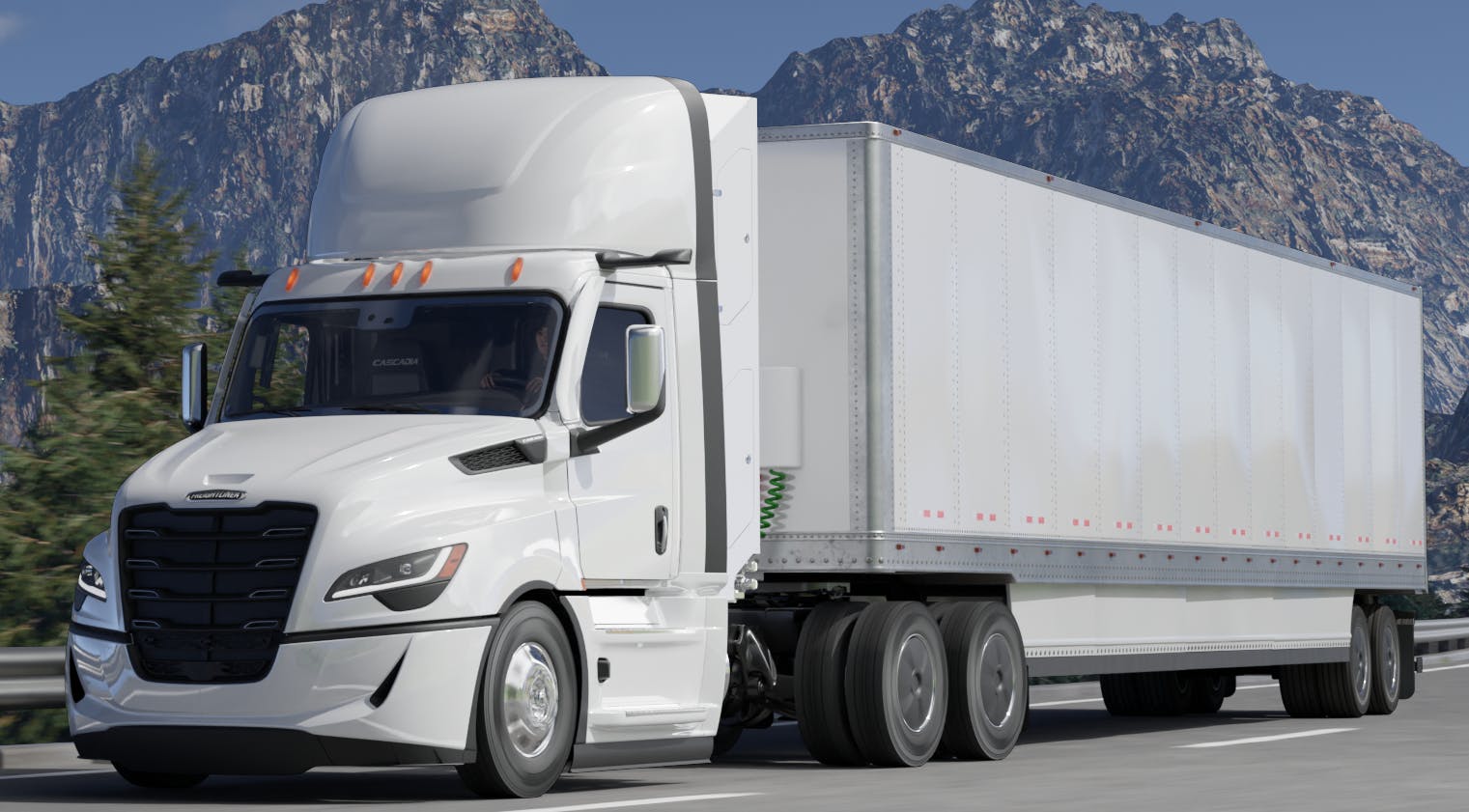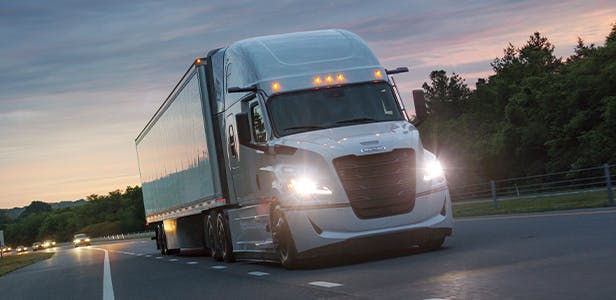You Asked, We Answered: Electric Truck FAQs
Freightliner Electric Trucks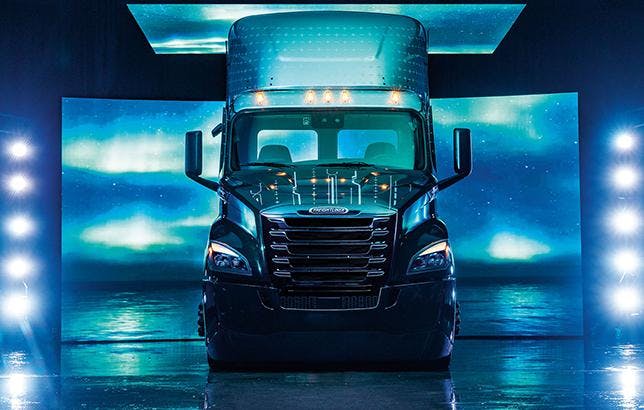
As interest in implementing electric trucks picks up speed, the influx of information can be overwhelming.
We're here to help you cut through the uncertainty and provide you with clear answers around electric semi and medium-duty trucks, like the Freightliner® eCascadia® and Freightliner® eM2. Whether you're a fleet manager, a truck driver or you're just curious about the future of transportation, let this be the compass for your electrification journey.
How far can an electric truck drive on a single charge?
The range of electric vehicles can be influenced by multiple factors, including temperature and driving conditions, payload, driving behavior and other considerations. Freightliner electric trucks, the eM2 and eCascadia, are available in multiple configurations with different battery packs and e-axles, all of which influence their precise driving ranges.
For the Class 8 eCascadia, a smaller battery pack configuration (291 kWh) with a single rear axle can typically drive up to 155 miles on a full charge. Opting for a larger battery pack (438 kWh) can increase the typical range to 230 miles.
The Class 6 eM2 with a smaller battery pack configuration (194 kWh) can provide a typical range of 180 miles. The Class 7 eM2, equipped with a larger battery pack (291 kWh), can provide a typical range of 250 miles, assuming a dry box route. It's important to note that using a refrigerated box impacts range as the refrigeration unit draws energy from the vehicle’s batteries.
At Freightliner, we’ve conducted extensive field studies that have shown that most daily ranges for fleets focused on port drayage, intermodal transport and regional-haul routes typically fall between 100 to 200 miles, which has directly influenced the way we’ve designed these vehicles for these applications.
We also carefully balance other considerations, like weight, to ensure our vehicles excel in performance, meeting the unique needs of these customers.
The eCascadia and eM2 feature driving ranges that go beyond the minimum requirements for typical use cases, ensuring reliable performance even in challenging conditions. This intentional design allows for confidence when planning routes with a margin of safety.
What safety features are included in electric trucks?
The eM2 and eCascadia come equipped with an array of industry-leading safety features to mitigate accidents. Both trucks come standard with the Detroit Assurance® Suite of Safety Systems, which includes Active Brake Assist (ABA), Active Lane Assist (ALA), Adaptive Cruise Control (ACC) to 0 MPH and Brake Hold Mode (BHM).
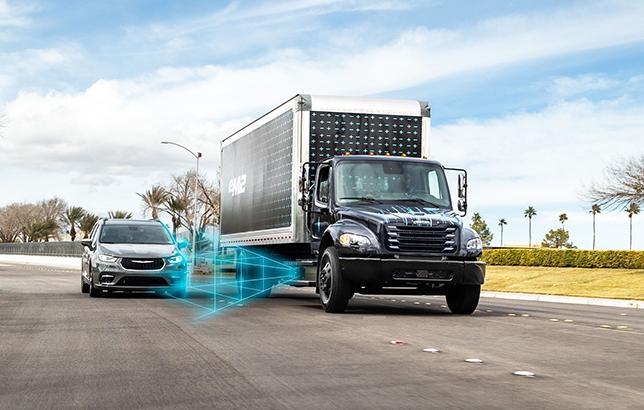
In the event of collision, the eM2 and eCascadia have built-in safety mechanisms, including impact sensors throughout the truck that open the high-voltage interlock loop to cut electrical flow and minimize electrical risks. The driver also has an emergency stop button that is designed to instantly shut off the high-voltage circuit, if necessary. If first responders need to intervene, there are accessible, low-voltage cables that can be cut to shut down the high-voltage electrical system.
Even in water submersion scenarios, the high-voltage circuit remains isolated from the chassis, to help mitigate electrical risks. Freightliner Emergency Response Guides are available for download, empowering dealers and customers with essential information on how to proceed in specific emergency situations.
All Freightliner dealers also undergo training, ensuring they are equipped to navigate the intricacies of these systems and assist customers in the event of an accident.
There are other safety events that do not include accidents that have been taken into consideration. To monitor the health of the battery pack, these trucks employ a battery monitoring system (BMS) that constantly checks for abnormal heat or voltage fluctuations. They also have a gas detection system to alert the driver to potential gas leaks from the battery pack, to better allow for swift and safe response procedures.
What are maintenance costs for electric trucks?
The actual cost savings vary from customer to customer. Many electric truck adopters have experienced reductions in their maintenance expenses because the eM2 and eCascadia have fewer components to maintain. In fact, there are 40% fewer touch points that require service from a technician.
Fleet managers can significantly contribute to cost savings by adhering to the recommended maintenance schedule outlined in the driver’s and workshop manual, which are consistent for all models and configurations.
Do daily charging needs for electric trucks disrupt operating schedules?
The eM2 and eCascadia were designed for convenient and efficient charging. Both vehicles use CCS1 DC charging, the standard charging protocol for electric vehicles in North America, ensuring widespread compatibility. These vehicles can accept up to 180 kilowatts of power per port. The eCascadia, with a larger battery pack (438 kWh), offers the option to have two charge ports on the same truck, which could potentially receive 270 kilowatts of power.
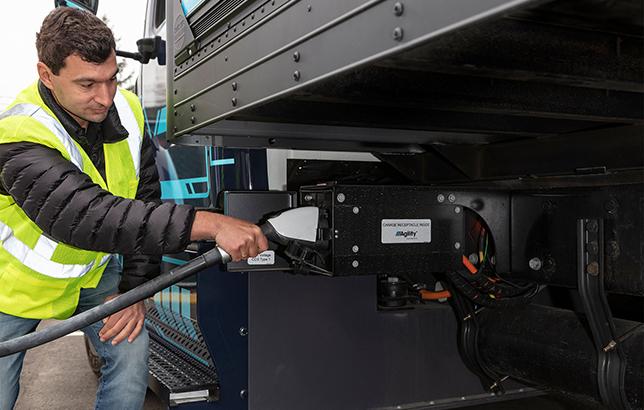
In optimal conditions, the eM2 with a smaller battery pack (194 kWh) can be charged from 0% to 80% in as little as one hour, while the eCascadia can be spec’d with a smaller battery pack (291 kWh) or dual-port charging with the larger battery pack (438 kWh) to enable a 90-minute recharge time. Even in less-than-ideal circumstances, where charging may take two to three hours for the eM2 and three to four hours for the eCascadia, these times are still reasonable for certain operations.
The cost of electricity has a significant impact on the operating costs of electric vehicles. Intelligently planning charge times, including charging during off-peak hours, can reduce these costs. Additionally, a charger management system can automate the charging process, staggering the charging times for multiple vehicles and further optimizing cost savings.
Are electric trucks ideal for cold environments and weather?
It is well known that temperatures do have an impact on the driving range of electric vehicles. To better understand how that carries over, Freightliner engineers have tested the eM2 and eCascadia in both extremely high and low temperatures. It is difficult to pinpoint a precise temperature at which their performance is impacted too dramatically for operation because there are many factors that play into this equation. However, if you are seeking to electrify a route that is consistently below -4°F, we would recommend reaching out to Detroit eConsulting for a more detailed route analysis.
The trucks themselves are equipped with several features that help them to perform in cold environments. One of the main features, preconditioning, reduces range impact associated with warming up the truck by enabling that to be done while the truck is plugged in to the charger. Both vehicles come with a preconditioning feature. When a truck is plugged in before a shift, this feature warms the cabin, defrosts the windshield and ensures the battery is at the proper temperature so no time is wasted before getting on the road. Electric trucks differ from their diesel counterparts when operating in cold environments because there are no fuel gelling issues or need for external heaters. Electric trucks (even without using the preconditioning feature) warm up the cab quicker than diesel trucks, due to the use of electric heating elements rather than relying on engine waste heat.
Does going electric require extensive driver retraining?
A major design goal of the eM2 and eCascadia was to keep the driving experience as familiar as possible while prioritizing driver comfort. With the addition of intuitive touch screen displays to keep drivers informed, the main adjustment drivers need to make is to familiarize themselves with regenerative braking.
This feature is controlled the same as a traditional Jake Brake or engine brake. Drivers use a lever switch on the side of the steering wheel, shifting up and down. The further shifted down, the more stopping power received.
This learning process typically takes a few weeks. Visual displays in the vehicle allow the driver to monitor how energy flows across the chassis, reinforcing the concept of using regenerative braking instead of traditional service brakes when appropriate.
Driver training videos are also available and are the perfect starting point for those making the transition.
Can electric trucks handle heavy loads?
The eCascadia can haul up to 82,000 gross pounds with ease and many drivers who participated in the Freightliner Innovation Fleet have shared their satisfaction with its performance. Those hauling these heavy loads will appreciate that this exemption is factored into the 82,000-pound rating, ensuring no noticeable impact on the vehicle’s performance in terms of acceleration or gradeability.
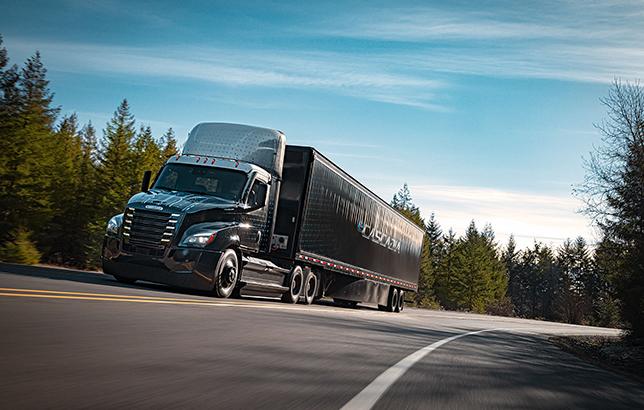
Hilly terrain can cause some to question the abilities of an electric truck, as many believe it causes excess energy to be burned. For the eCascadia, the regenerative braking feature allows for energy recaptured when descending hills to be stored and used during other portions of the truck’s route, which means there is little effect on the truck’s load or range capabilities.
What grants or incentives are being offered to transition to electric?
While there are many grants and incentives available for those looking to transition to electric vehicles, they vary by location and may change over time. Here are some common types:
- Federal Tax Credits: Federal tax credits can significantly reduce the upfront cost of electric trucks and may vary depending on the vehicle's weight and battery capacity.
- State and Local Incentives: Many states and local governments offer additional incentives, such as rebates, tax credits or grants to promote the adoption of electric trucks. These incentives can further lower the total cost of ownership.
Read more on how to navigate the electric vehicle incentive landscape here.
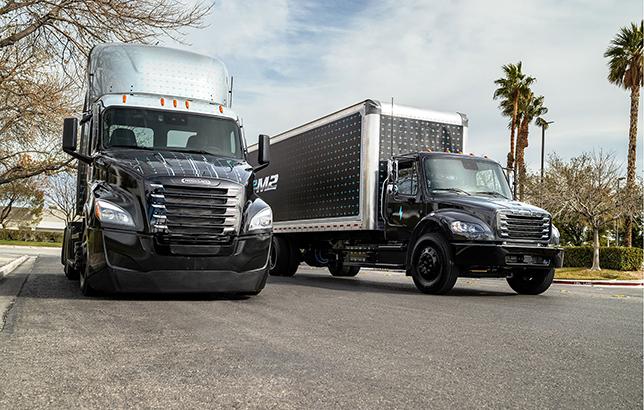
While the massive amount of information available on electrification can seem daunting, we’re here to help you navigate it. Contact your dealer or the Detroit eConsulting team to map out your next steps toward a more sustainable tomorrow.

